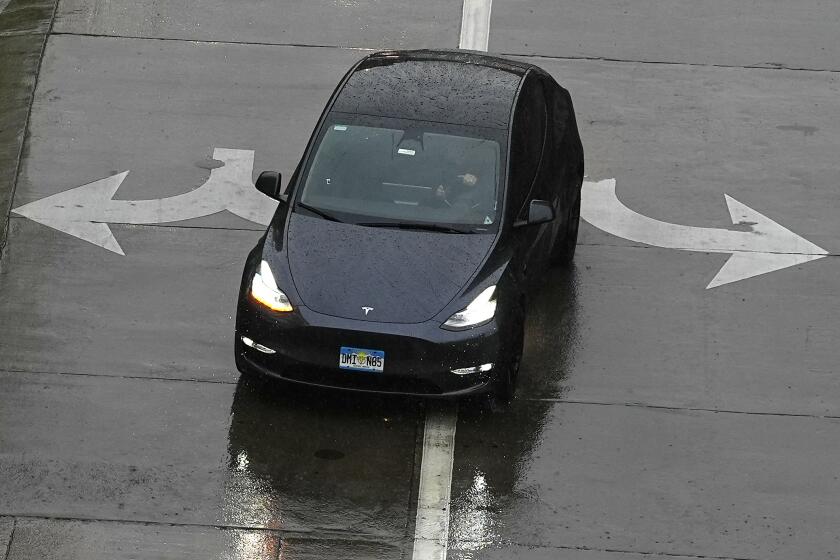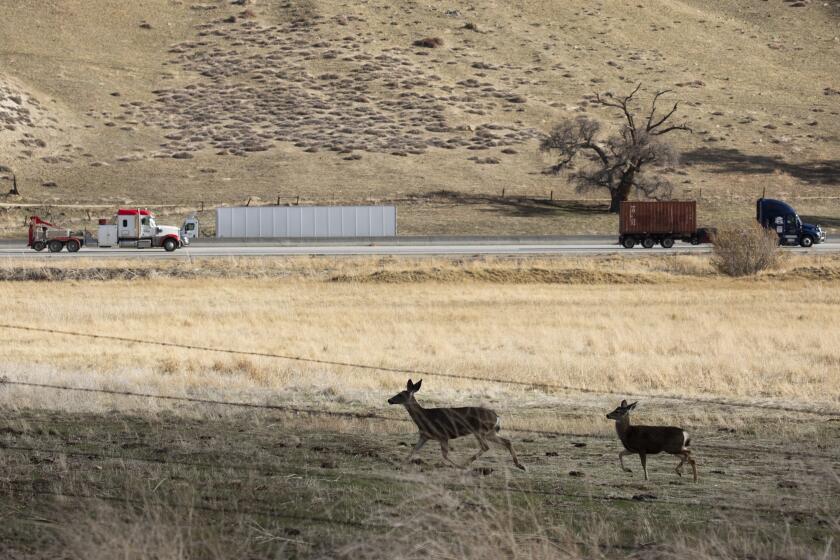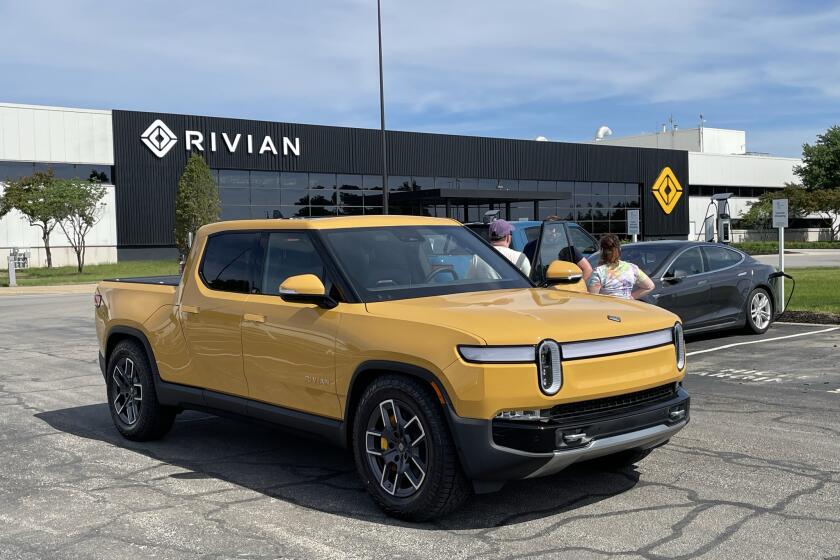Column: Elon Musk wants to rate journalists’ credibility. But how’s his credibility?
Stung by a series of news articles delving into safety issues at Tesla Motors’ Fremont factory, Tesla Chief Executive Elon Musk has tweeted that he’s thinking of starting a website that would score journalists for “credibility.”
If he’s looking for a model, he might start with the numerous articles that have scored him for credibility. But he should be warned: He’s not receiving A’s.
Tesla, in fact, is becoming known for its inability to deliver on its promises. Its production history is a string of missed deadlines, sometimes by years. That’s the reality, but it’s been obscured by a hype, much of it generated by that preeminent hype machine, Elon Musk.
We put down a $1,000 deposit to get on a two-year waiting list for this car, and it’s falling apart.
— Edmunds.com
Let’s take a look.
As my colleague Russ Mitchell reported last month, “Musk originally planned to be building 500,000 cars a year in 2018 at its Fremont, Calif., assembly plant, the vast majority of them Model 3s. Even if Tesla hits all its current targets, no more than 150,000 Model 3s will be produced this year.”
The company had originally promised it would be making 5,000 Model 3s every week by the end of last year, but delivered only 222 in the third quarter of last year, and another 1,542 throughout the entire fourth quarter.
The production schedule for the Model 3, which Tesla has pitched as a mass-market, $35,000 vehicle crucial to its evolution into a self-sustaining auto company, has consistently been pushed back.
As Bloomberg documents, in February 2017 Musk told investors that Model 3s would be rolling off the Fremont production line at a rate of 5,000 a week by the end of last year and 10,000 a week by the end of this year. Then the target became 2,500 a week by the end of last March and 5,000 a week by the end of June. Musk hasn’t provided a new target for 10,000 a week.
On May 2, the company disclosed that Model 3 production had hit 2,270 cars a week in April “for the 3rd straight week over 2,000,” obviously missing its first-quarter target. It’s proper to note that the $35,000 Model 3 remains largely a dream; the company is focusing on higher-priced versions, including a $78,000 Model 3 that it says will become available this summer; buyers who put down $1,000 deposits hoping to have basic transportation from Tesla this year are likely to be disappointed.
Delays also had plagued the company’s Model X luxury SUV, which had missed its production target by almost two years when it finally began rolling out in September 2015.
Among other missed targets listed by UBS in a recent report were a coast-to-coast drive using the company’s autonomous drive system by the end of last year (Musk said in February that it was then set to happen within three to six months); a doubling of North American supercharger capacity in 2017 (only 120 superchargers were added, UBS calculates, an increase of 35%); and storage battery sales of $2 billion to $5 billion by the end of last year. UBS estimated sales of only $140 million last year.
Tesla has essentially pleaded “guilty with an explanation” on some of these misses. The company attributed the missed Model X deadline to its own “hubris in adding far too much new technology to the Model X in version 1, insufficient supplier capability validation, and Tesla not having broad enough internal capability to manufacture the parts in-house.”
In other respects, Tesla and Musk have skated on the production problems by distracting investors and the press with a steady stream of glitzy new announcements that seize attention from the workaday issues. The vehicle models now promised for sometime in the murky future include an electric semi-truck and a sports car.
The most important unfulfilled promise by Tesla may be an implicit one: to deliver a quality product. Recent reports on Model 3s purchased at retail by professional reviewers have been brutal. Consumer Reports this month declined to recommend the car, citing inordinately long braking distances, distracting controls and poor riding comfort. The most gruesome review came from the respected auto shopping site Edmunds, which has been subjecting a $56,000 Model 3 to routine usage for four months.
“We put down a $1,000 deposit to get on a two-year waiting list for this car,” Edmunds reported this month, “and it’s falling apart.” Parts are broken and falling off, the all-important internal control screen is full of bugs, and the smartphone app that locks and unlocks the vehicle is unreliable, among other problems.
Signs are emerging that the investment community is getting wise to Musk’s habits. When he claimed in April that Tesla would not need to raise money in the capital markets this year, analysts were quick to point out that in February 2012 Musk asserted that the company would “not need to ever raise another funding round.” Since then, Tesla has raised nearly $9 billion in financing. Tesla’s high-flying stock price, meanwhile, may be coming down to earth. It’s lost more than 25% of its value since peaking in June 2017. At midday Thursday it was trading at about $278.50.
What may really irk Musk isn’t merely that journalists are now questioning his company’s record; it’s that the formerly supine approach taken toward Musk and Tesla by much of the press is disappearing. (For a hilarious look at the old approach, check out this video posted on YouTube.)
That’s not a sign of deteriorating press credibility, but just the opposite. If Musk wants to throw stones, he should at least recognize that he’s standing inside a very big glass house.
Keep up to date with Michael Hiltzik. Follow @hiltzikm on Twitter, see his Facebook page, or email michael.hiltzik@latimes.com.
Return to Michael Hiltzik’s blog.




